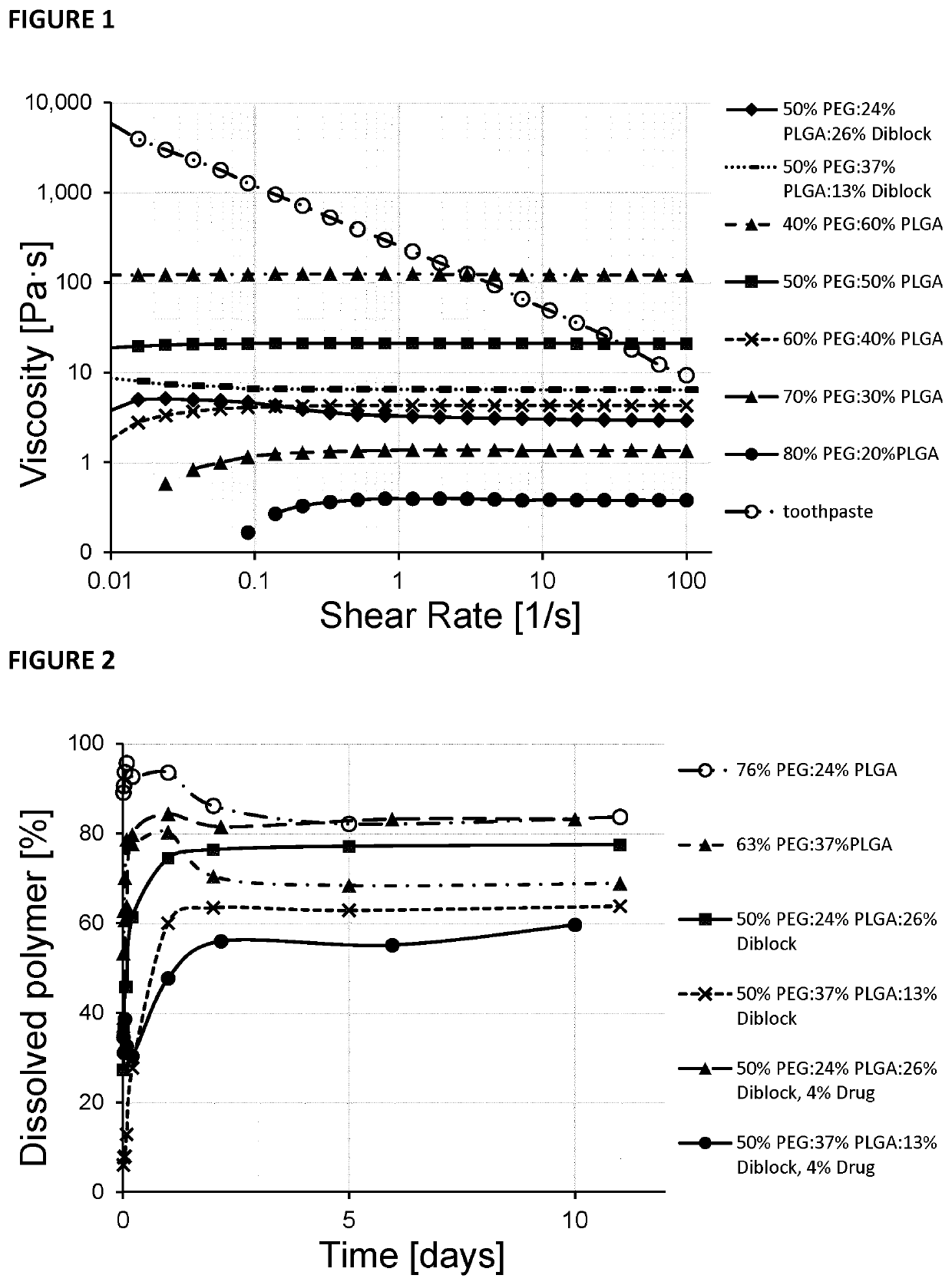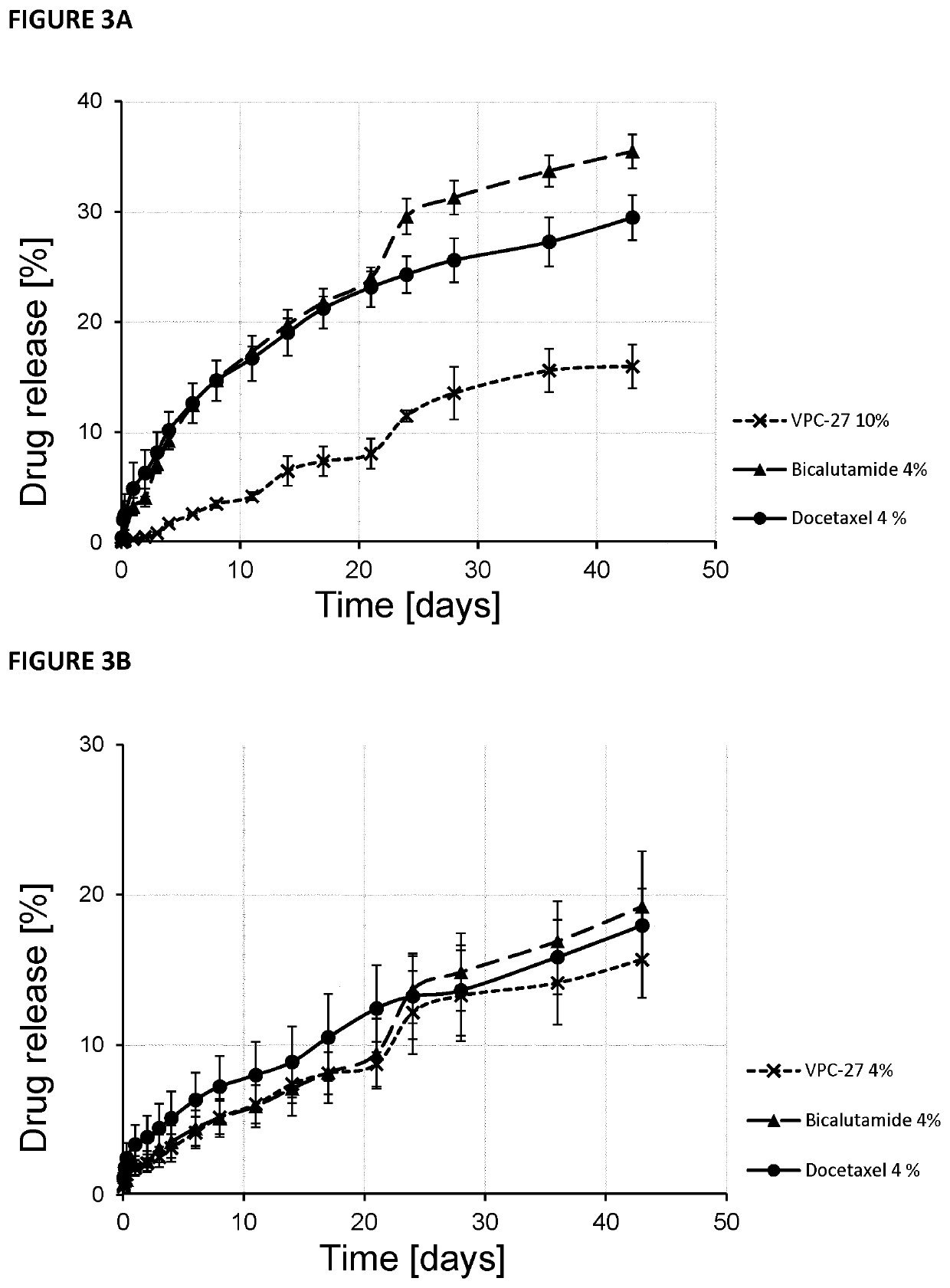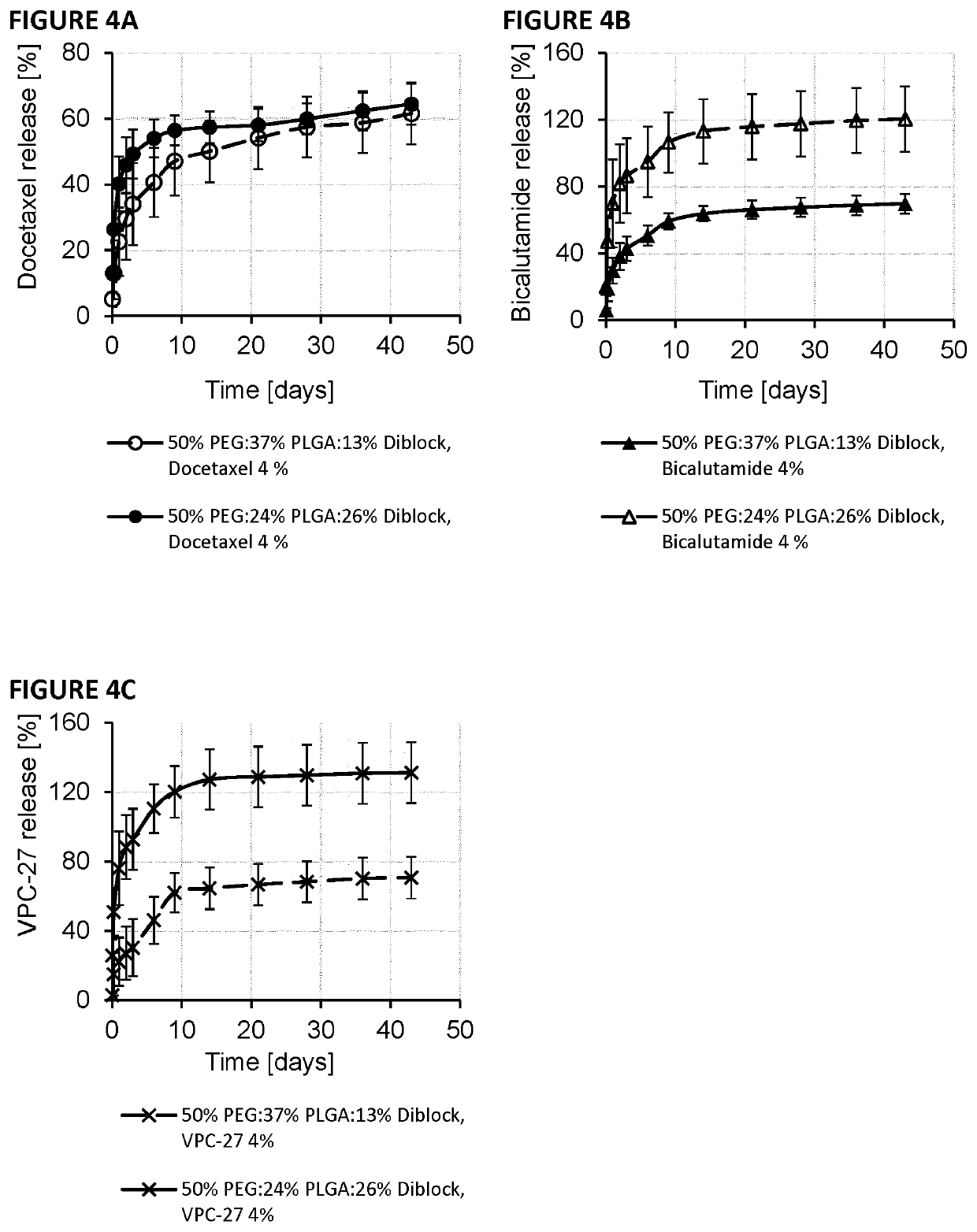Polymeric paste compositions for drug delivery
a polymeric paste and composition technology, applied in the direction of emulsion delivery, pharmaceutical delivery mechanism, aerosol delivery, etc., can solve problems such as waxy forms, and achieve the effect of improving polymeric pastes
- Summary
- Abstract
- Description
- Claims
- Application Information
AI Technical Summary
Benefits of technology
Problems solved by technology
Method used
Image
Examples
example 1
Viscosity of Polymeric Pastes Manufactured Using Different Ratios of PLGA, PEG and Diblock Copolymer
[0132]The polymeric paste is a biocompatible formulation comprised of two or three constituents: poly-(lactic-co-glycolic) acid (PLGA), a diblock copolymer of DL-lactide (DLLA) (optional) and methoxy polyethylene glycol (mePEG) termed poly(DL-lactide)-methoxy polyethylene glycol (PDLLA-mePEG), and polyethylene glycol with a molecular weight of 300 Da (PEG 300™). Drug or drug mixtures can be incorporated into the paste through levigation with a spatula and the paste can be injected through a 20 G needle. The PLGA is comprised of equal amounts of LA and GA (50:50 Poly[DL-lactide-co-glycolide]) and may have a degradation time of 1-2 months. The polymeric drug delivery paste may be an injectable viscous solution at 37° C. After injection into an aqueous tissue environment, the paste may transform into a waxy solid, which may serve as a sustained release platform for incorporated drug(s).
[...
example 2
The Release of PEG 300™ from Polymeric Paste
[0135]Seven compositions of polymeric pastes were manufactured from PLGA, PEG and diblock copolymer as described in EXAMPLE 1. For each of the seven different polymeric pastes, 8×100 mg each were weighed into the corner of 8×20 ml pre-weighed scintillation vials by holding each vial at a slight angle. 10 ml of water was added to each vial with the vial still held at an angle so the paste remained in the vial corner whilst exposed to water. After 10 minutes the outer surface of each paste whitened slightly indicating setting of the paste and the vials were then reoriented to the vertical position. This procedure prevented a premature disruption of the setting paste upon exposure to water turbulences. The vials were capped and placed in a 37° C. oven. At various time points the vials were removed, water was aspirated and the contents dried for one hour in a 37° C. incubator followed by one day of vacuum drying at room temperature. The vials ...
example 3
Release of Docetaxel, VPC-27 and Bicalutamide from Polymeric Pastes
[0137]Polymeric pastes were manufactured from 50:50, 55:45, 60:40 weight ratio compositions of PLGA (50:50 IV=0.15-0.25 dL / g) and PEG 300™, 50:37:13 ratios of PEG:PLGA:Diblock, or 50:24:26 ratios of PEG:PLGA:Diblock using the methods described in Example 1. The presence of the diblock copolymer allows more detailed control of drug release. This diblock copolymer has been previously described to increase the water solubility of hydrophobic drugs by forming diblock micelles with hydrophobic cores that allows the drugs to partition into the core and increase the apparent solubility. In the paste application as water enters the paste matrix the water soluble diblock begins to dissolve out and any drug dispersed at the molecular level may become “micellized” in the diblock milieu to increase drug release. The drugs VPC-27, bicalutamide or docetaxel were added at various weight ratios directly into the paste with mixing by...
PUM
| Property | Measurement | Unit |
|---|---|---|
| molecular weight | aaaaa | aaaaa |
| molecular weight | aaaaa | aaaaa |
| molecular weight | aaaaa | aaaaa |
Abstract
Description
Claims
Application Information
 Login to View More
Login to View More - R&D
- Intellectual Property
- Life Sciences
- Materials
- Tech Scout
- Unparalleled Data Quality
- Higher Quality Content
- 60% Fewer Hallucinations
Browse by: Latest US Patents, China's latest patents, Technical Efficacy Thesaurus, Application Domain, Technology Topic, Popular Technical Reports.
© 2025 PatSnap. All rights reserved.Legal|Privacy policy|Modern Slavery Act Transparency Statement|Sitemap|About US| Contact US: help@patsnap.com



